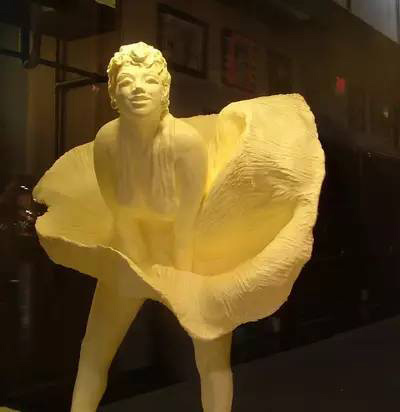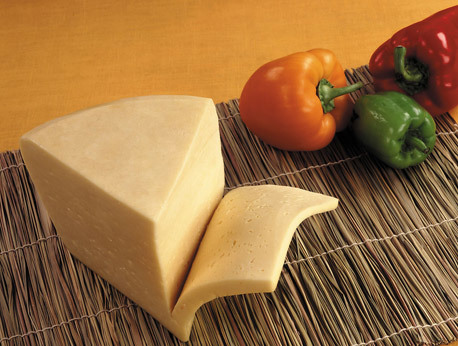Butter, butter, butter, what is the relationship between them?

Speaking of butter, everyone is familiar with it. Even if I have never seen butter, I have eaten all kinds of butter bread and butter biscuits. However, many people still don't know that butter is actually a dairy product.
butter (butter) is called butter in Taiwan and butter in Hong Kong. According to China's national food safety standards, butter or cream corresponds to butter, and cream corresponds to cream.
The history of butter: edible and usable
Speaking of it, butter is also a food with a long history. The earliest record of butter can be traced back to a piece of limestone 4,500 years ago, which shows the production process of butter in the form of pictures. In addition to being used as food, butter was used in some religious ceremonies in many cultures due to its rarity and purity.

The use of butter in history is comparable to panacea, and it is widely used in all aspects of daily life by people all over the world. The ancient Greeks and Romans used butter as a "morning and evening cream" on the skin, and as a "hair wax" on the hair, in order to achieve the "greasy noodles" beauty effect. The ancient Egyptians used butter as a medicine to treat eye infections and applied it to the skin to treat skin infections and burns. Nordic people believe that eating butter can prevent kidney and bladder stones. There is also an ancient custom in Britain, which is to give newlyweds a jar of butter to bless them with many children and happiness.
Originally in Europe, butter was regarded by the ancient Romans and Greeks as the food eaten by barbarians. It wasn't until after the 15th century that butter slowly made a gorgeous turn and became a symbol of wealth and luxury. But this turn did not last long. With the development of industrial production after the Industrial Revolution, the production efficiency of butter has been improved, and the production cost has been drastically reduced. But butter, which was originally a luxury item, has gradually appeared on ordinary people's tables.
In addition, there are still many artists who use butter as a raw material to create works of art.

Butter Sculpture: Farm Life

Butter sculpture: Marilyn Monroe
What is the relationship between cream and butter? So how is butter produced?
Milk is a kind of emulsion, which contains about 3.6% fat. These fats are dispersed in the milk in the form of small fat globules, and their diameter is very small, usually between 0.1-20 microns. Why don’t these small fat globules gather together to make the milk layer? It’s necessary to talk about the composition of milk fat: more than 98% of milk fat is neutral fat based on triglycerides, and the rest Less than 2% are polar fats based on phospholipids. The innermost part of these small fat globules is hydrophobic triglyceride, and a layer of phospholipid and protein is wrapped around the triglyceride. The hydrophobic side of this film is against the same hydrophobic triglycerides, while the hydrophilic side is exposed, so that these small fat globules can be relatively stable in the milk without gathering together.
However, although fat globules and fat globules will not fuse together, their density is still smaller after all. Therefore, if the milk is left for a long time, the fat will slowly float to the upper layer. Using this difference in density, we can divide milk into cream and skimmed milk through the principle of centrifugation.

The process of turning cream into butter
Cream contains about 40% fat and about 60% water. These fats are also dispersed in water in the form of fat globules. The fat globules are separated by a membrane on the outer surface, so they cannot aggregate with each other. The fat globules are surrounded by continuous water. So we say this is oil-in-water. At this time, if we apply a mechanical external force to the cream to destroy the membrane surrounding the fat globules, the fat globules that are originally isolated from each other can be united. If we keep a lower temperature at the same time and let the fat solidify (the freezing point of milk fat is about 30 degrees Celsius), the excess water will be separated from the fat. The small fat particles that slowly solidified stick to each other to form a large pile. At this time, the remaining small amount of water is dispersed in the fat in the form of small droplets, the oil-in-water situation is reversed to water-in-oil, and the cream becomes butter.
In the actual production process, the cream is usually pasteurized first. On the one hand, it eliminates the microorganisms in it and ensures uniform product quality. On the other hand, it can also inactivate the lipase and oxidoreductase in it, thereby limiting Their effect on the decomposition and oxidation of milk fat. Then, specific lactic acid bacteria must be inoculated in the cream to ferment to produce the unique flavor substances of the butter. After that, the cream is whipped vigorously to complete the inverse process from oil-in-water to water-in-oil. Finally, through slow and gentle mixing, the unformed butter cubes become uniform butter. In this last step, salt can also be added to produce salted butter or semi-salted butter. Normally, to produce 1 kg of butter, 20 liters of whole milk is needed (only the fat content is used).

Butter is delicious, don’t be greedy
Butter is delicious, and there is even an old French saying that "no butter, no big meal". Butter can be used directly on bread, can also be used to cook other foods, and can also be used to make pastries and biscuits. More than 80% of butter is fat, in addition it contains less than 16% of water, and the rest is residual protein, sugars, minerals and vitamins. Butter contains higher calories. 100 grams of butter contains 3136 kJ (750 kcal), which is much higher than chocolate (100 grams of dark chocolate contains about 2200 kJ). What you may not know is that in addition to providing more calories to the human body, butter is also rich in fat-soluble vitamins (vitamins A, D, E, K), especially vitamin A. Eating 10 grams of butter can provide 8% of the human body. Vitamin A required daily.
However, butter also contains high cholesterol, 240-280 milligrams of cholesterol per 100 grams of butter, so it is recognized as one of the foods that cause cardiovascular diseases and other health problems. Therefore, for people who already have high blood fat, it is better to eat less butter, but for people with normal lipid metabolism, moderate consumption of butter will not cause any harm to the body. Since the vitamins in butter are easily destroyed at high temperatures, it is best to spread the butter directly on the bread and eat it raw. Although butter is a dairy product, it contains only a small amount of lactose, so even people with lactose intolerance will not cause discomfort when eating butter.

So, if you eat a little bit of butter every day, wouldn’t it be necessary to buy a piece of butter? Don’t worry, the main ingredient of butter is fat, and microorganisms cannot survive and reproduce on it. The only thing that needs attention is the oxidation and Hydrolysis, if the storage temperature is too high or the packaging is not strict, the oxidation or hydrolysis of fatty acids may produce some volatile ketones and aldehydes, which will cause the butter to produce an unpleasant smell. Therefore, pay attention to how much you eat and unwrap how many packages each time you eat, and remember to wrap it before putting it back in the refrigerator. In addition, if you buy too much, you can freeze the butter. When you need to eat it, remember to put it back in the refrigerator five or six hours in advance to thaw.
A summary of AI:
butter = butter = butter in Taiwan = butter in Hong Kong;
Cream="cream"=cream;
After centrifugation, milk becomes cream and skimmed milk; after a series of beatings, cream becomes butter.
Latest developments


